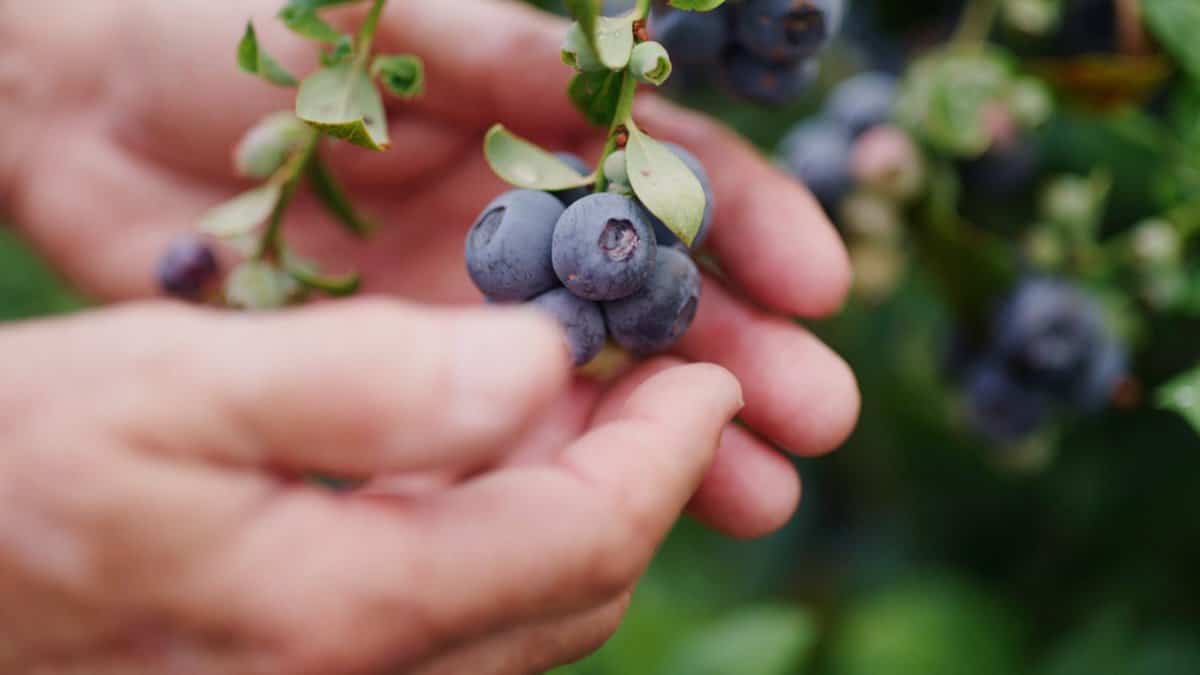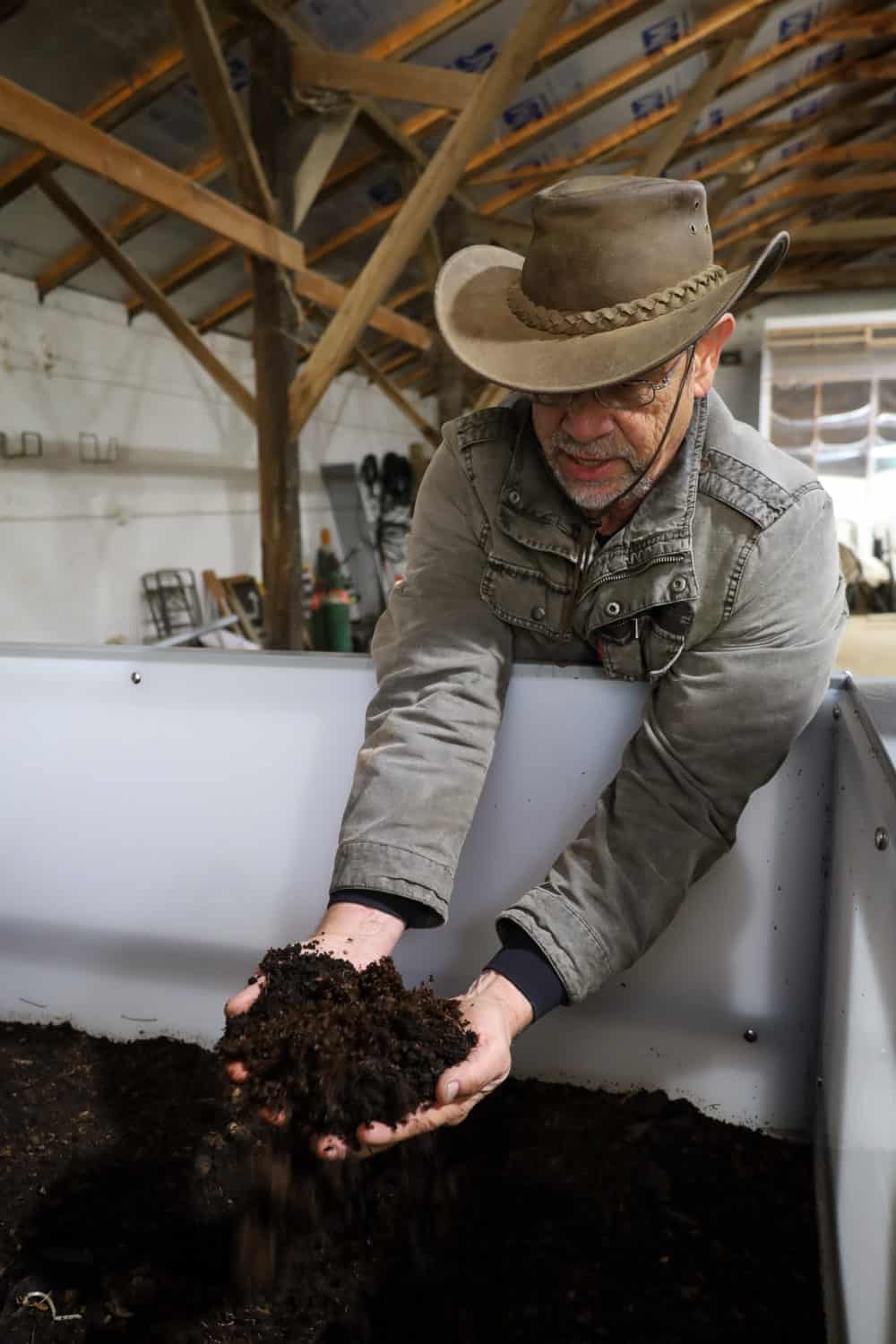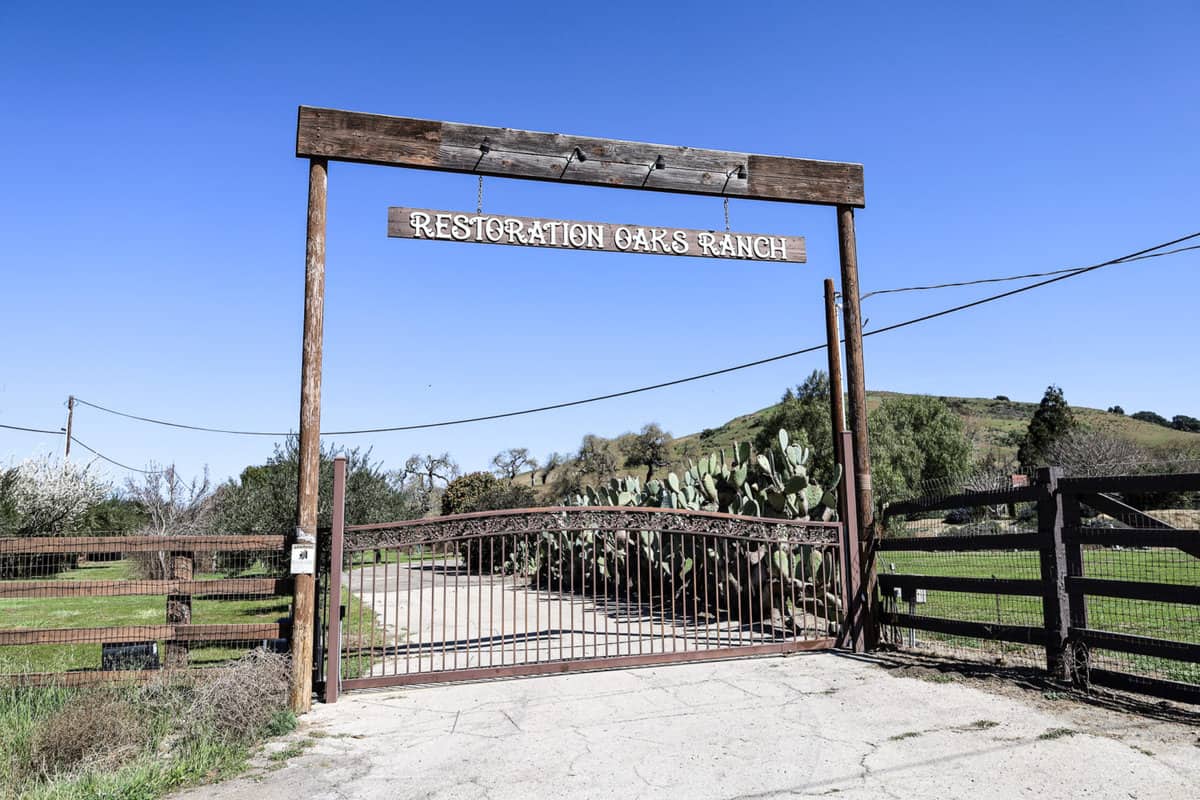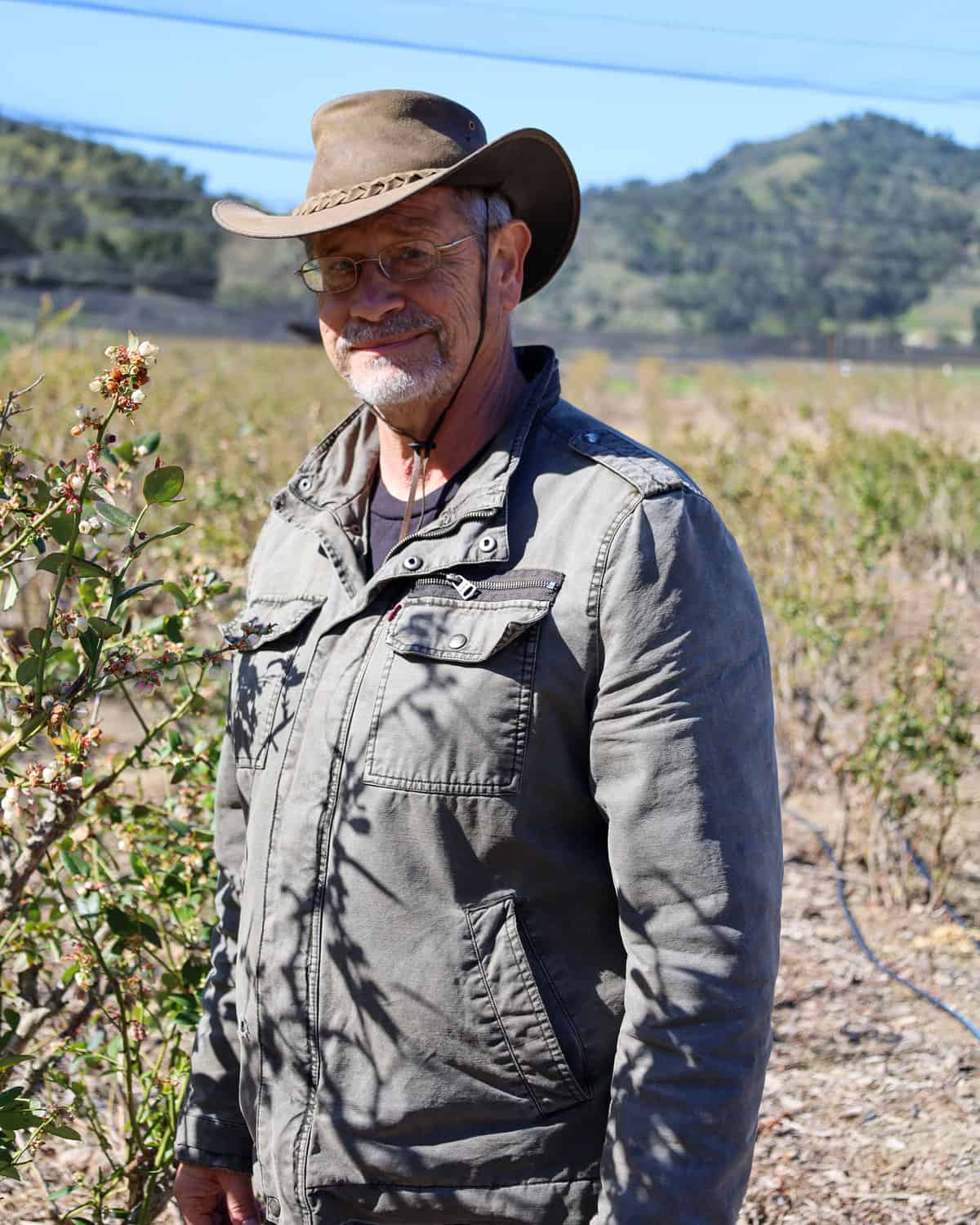Meet a Farmer – Ed Seaman of Santa Barbara Blueberries
From Tech to Tractors
Ed Seaman wasn’t always a farmer. In fact farming at Santa Barbara Blueberries is, in his own words, his “retirement”. When presented with the opportunity to take over his father-in-law’s property about 30 miles north of Santa Barbara, he decided to leave his career as an IT manager for a large biotech company and move out to the picturesque Restoration Oaks Ranch.
We recently stopped in for a visit to learn more about his operation and see why he made the switch from tech to tractors. “I thought that this would be a really nice office space. I didn’t know what I was getting into. Now I do. I love it, but wow,” said Seaman.
Santa Barbara Blueberries is located about five miles south of Buellton, right off Highway 101. The blueberry farm is just part of the 955 acre Restoration Oaks Ranch, which also includes a retreat center and cattle ranch. The farm has about 32,000 blueberry bushes on site. Though they sell blueberries to some local markets, it’s mostly a U-Pick operation. Santa Barbara Blueberries has about sixteen varieties of blueberries, five varieties of raspberries, and only one variety of blackberries, because quips Seaman, “it’s awesome.”

The blueberry season is fairly short, typically running from June-July, but U-Pick raspberries and blackberries are available through October. Summer days at the ranch often bring families with young children, buses of visitors from Los Angeles, and summer camp groups. In addition to the U-Pick berries, he offers tours to his duck pond in the spring where visitors can learn about California toads and other wildlife, and in fall he hosts “Tarantula Trail” nature hikes where folks can interact with and learn about the Ebony Tarantulas on the farm. “They’re wonderful, wonderful critters. People tend to be afraid of spiders. If you came out on one of these nature hikes with us and met our tarantulas, you would fall in love with them,” he promised.
Seaman considers himself an agroecologist, which means that his berry growing operation is made part of the ecosystem, rather than displacing it. He takes great care in choosing which plots of land are best suited to growing berries, and which are better left alone. “We think everybody should do what we do, and we’re very proud of that,” he said. Of the 955 total acreage of the ranch, only twenty are devoted to berry growing. The rest of the ranch is wild with woodland areas and grassy savannas ideal for cattle grazing.

Seaman employs a variety of water saving techniques on his farm, including the use of drip irrigation to prevent water evaporation and vermicast to help the soil retain water. Vermicast is the end-product of earthworms’ breakdown of organic matter – AKA earthworm poop. Vermicast helps insulate the roots of plants’ from extreme temperatures, reduce erosion and weeds, and reduce the need for fertilizers. At Santa Barbara Blueberries, they have their own vermicast production in a barn on the property. There, they fill large bins with pre-composted green waste and add earthworms, which in turn eat the green waste and turn it into “black gold.” (Side note- earthworms are one of the few creatures on earth that can boast that their poop doesn’t stink!)
“We’re [redirecting] green waste out of the landfills, and putting it back into the food growing system. It’s pretty sustainable. We’re always looking for new ways to be part of the land every day, and every year,” said Seaman.
The Future of Farming
Seaman is a farmer first, and an educator second. He believes that people need to get back to understanding where their food comes from and to make an effort to support local farms and farmers. “I think education is probably the most important thing that we can do right now. Not only for consumers about their food, but for farmers and ranchers about how they can grow food and get it out to the local community before it goes out to distribution,” he said.
To help spread the word, Seaman works with organizations like the Santa Barbara Food Action Network, and is the Executive Director of the Wild Farmlands Foundation. Its mission is “to educate policymakers, food growers, landowners and the public about how we can scalably store & manage carbon, end runoff pollution, gain food security, take pressure off of landfills, minimize food packaging waste and regenerate ecosystems through the regional small farm sector.” The Wild Farmlands Foundation encourages communities to support small, independently owned farms and ranches, and encourages more young people to enter into the profession.

In addition to his outreach work in the community, Seaman is devoted to restoring his own land. His team is currently in the process of planting and caring for 1,000 native oak trees on eleven oak tree planting sites in the central valley of Restoration Oaks Ranch. Once completed, it will also feature a wildlife watering trough and a guest camp for overnight guided nature hikes, wildlife, and bird-watching retreats.
Seaman is proud of his work on his blueberry farm and beyond. He thinks that California is a wonderful state for agriculture and in particular, the Santa Barbara region with its mild Mediterranean climate. He wants people in his community and beyond to appreciate the land and learn more about how their food is grown. “I think if people would come out and visit the land, and if farmers and ranchers would allow the public out onto the land, they would meet some very interesting ambassadors,” he said.
Seaman is ready to welcome you for a visit to Santa Barbara Blueberries and Restoration Oaks Ranch. Visit their website to learn more about U-Pick dates and other events.
This article was written by Alison Needham, photos by Alison Needham.


Thanks for the article. Very interesting. I’m glad that Seaman made the switch.
dear Mr Seaman,
My name is Gus Albertsen and I am interning with the Food Action Network . I would love your thoughts regarding a possible mobile meat processing trailers . My questions are
1 Do you (and Restoration Oak Ranch)have livestock and does your ranch harvest your cows for meat.
2 If Restoration Ranch does in fact harvesting meat , where do you travel to Get your meat slaughtered?
2b Do you think you and your ranch would support a mobile harvesting units , citing driving miles and gas costs and associated overhead costs?
thank you so much Mr Seaman , we would love your input.
Hi Gus, we aren’t actually affiliated with Santa Barbara Blueberries. We just wrote an article about them you will need to reach out to them directly so that they can answer your questions. Thank you.